You’ll be applying for roles that many other people might be applying for as well. For cosmetology students aspiring to make their mark in the beauty industry, a strong cosmetologist student resume is an essential tool for showcasing their skills, knowledge, and passion.
Whether you’re just starting your journey or looking to enhance your existing resume, this blog post is your ultimate guide to creating an impressive cosmetologist student resume that will capture the attention of employers and set you on the path to success.
How to Make a Cosmetologist Student Resume Stand Out
If you want to land that dream job at the perfect salon, you’ll need to revamp your resume. Don’t worry, it’s not a difficult task – even if you don’t have much practical experience.
Think of it like a facial. You’ll be taking what you already have, applying a scrub, then exfoliating and moisturizing to really make it shine. Just like you want people to notice your radiant skin, you want potential employers to pay attention to your shining resume.
According to a survey conducted by TheLadders, an online job-matching service, employers and recruiters spend an average of six seconds looking at a resume.
Six seconds. That’s all it takes for a potential employer to make a snap decision on whether they like you enough to invite you for an interview or toss your resume into the trash and forget about you in a heartbeat.
So, it’s important that you make those seconds count. You need to ensure that your resume is:
- Informative – it tells employers what they want to know about you (that you have the skills to do the job).
- Concise – it tells employers just enough but not everything so they’re intrigued and want to know more about you (via an interview).
Let’s start by discussing the resume structure you should follow, from top to bottom.
The Ideal Cosmetologist Resume Structure
Name and Contact Details
Your name and contact details need to be placed at the top of your resume. They should be the first thing a potential employer, recruiter or hiring manager sees. There are several reasons why this is the case.
First, employers and recruiters see so many resumes that it’s difficult for them to attach names to resumes. Your name needs to be in a larger font than your contact details (bold too, if possible). This helps it stand out so they can easily see it when they’re rifling through piles of papers.
As for contact details, these are also extremely important. If the potential employer liked your resume and wanted to arrange an interview or chat with you further, you need to make it easy for them to get in touch.
After all, no contact details only mean one thing: no further communication.
That’s why your contact details should ideally be at the top of your resume.
The details you should include are:
- Your address – if you’re concerned about privacy, it’s fine to just include the city and state that you’re based in.
- Your phone number – make sure you have voicemail so potential employers can leave a message if you’re not available to take a call. If you have a personalized voicemail, check that it’s professional.
- Your email address – when you’re including your personal email address, make sure it’s professional. Nothing that includes kisses, unprofessional abbreviations and so on. name@email.com is perfectly fine.
- Your LinkedIn (if you have one).
- Your social media handle(s) where you publish examples of your work (if you have one).
- Your website where you publish examples of your work (if you have one).
And one last thing – make sure your contact details are correct. You don’t want a message from a potential employer to disappear into cyberspace.
A Professional Summary of Who You Are
After your name and contact details, you want to provide potential employers with a brief summary of who you are professionally.
A good summary is something that includes some of your key professional strengths and skills. For example:
“I’m a licensed cosmetologist who trained at Aveda Institute, New York. I’m highly motivated, hard working, creative and flexible in the services I’m able to provide – though, I’m particularly interested in hair styling and makeup application.”
See how the applicant has included some of her key selling points? She earned her license at a prestigious cosmetology school. She’s got some great personality traits and although she has a flair for hair styling and makeup application, she’s flexible.
You can start drafting your professional summary by writing down all of your good traits. Ask yourself the following:
- What personality traits do you think someone needs to be a great cosmetologist? Which of those traits do you have?
- What skills do you think someone needs to be a great cosmetologist? Which of those skills have you learned while at beauty school?
- Are there any areas of cosmetology that you have a flair in or you’re particularly interested in?
Then, summarise all of these into a few sentences. Three to four would be perfect.
Your Work Experience
Now it’s time for the good stuff. What potential employers are actually looking for.
If you’re fresh out of beauty school, you might not have much practical experience. But don’t worry!
You’re likely to have completed a work placement or internship while you were at beauty school. Or perhaps you had a part-time job in a salon while you were at high school. Include all of these in your resume too.
When you’re talking about your experiences, be sure to include the following:
- What the role was.
- Where the role was (the company and the location).
- When you held this role (the date range).
- A summary of the different responsibilities you had and the tasks you carried out.
- Any key achievements you orchestrated or played a role in. For example, if you sold an average of $1,000 worth of beauty products a month, include it!
Your Education/Qualifications
When your work experience and education/qualifications sections are separate, it keeps your resume looking neat. This is, obviously, the section where you list any relevant qualifications you have.
For example:
- Which cosmetology school you got your license from and the dates you studied there.
- Any key programs you completed.
- Which high school you studied at and got your diploma from.
If you haven’t got much practical experience, talk about your academic experiences and link this to the role you’re applying for.
What skills have you picked up and developed during cosmetology school? What programs did you study and what did they teach you? Talk about these in your resume.
Notable Skills
Remember when you were compiling a list of things to include in your professional summary (the paragraph at the top of your resume)? This is the section where you can include everything that’s relevant but you haven’t had a chance to include in the other sections.
If you’ve already included everything, don’t worry. You can skip this section, in that case.
9 Tips to Help You Craft the Best Resume Ever
Here are some quick-fire tips to help you get that resume on point. Why not use this as a checklist and mark points off when you’re double-checking your resume?
- Only include achievements that are relevant to the role you’re applying for. Employers don’t need to know that you came first place in the 100m sprint at high school unless you’re going for an athletic scholarship or trying for the US Olympics teams.
- Chronologically order your experiences. The top of the page should be your most recent experiences.
- Be short and sweet. Just like you shouldn’t add all of your achievements from elementary school in, make sure you’re not writing reams and reams of copy. Ideally, a resume should be no more than a side of A4 (two, at most).
- Use bullet points. Stay away from long paragraphs and use bullet-pointed lists as these break up lengthy bodies of copy.
- Ensure your resume looks tidy. Is your text justified? Are the sections aligned with each other? Have you made headings bold? These details may be tiny but they can make a difference.
- Pick standard fonts – like Arial or Times New Roman. Now is not the time to break out some wacky font.
- Proof-read and double-check your resume. Then do it again. Typos and grammatical errors can ruin your chances of an interview – especially if they’re as embarrassing as these.
- Always be truthful. Never lie or even exaggerate on your resume because it won’t end well.
- Tailor your resume to the role. The perfect resume varies from role to role and employer to employer. Potential employers scan through resumes, looking for that ‘it’ candidate so to convince them that it’s you, show them what they want to see.
Frequently Answered Questions
What should I include in my cosmetologist student resume?
Include education details, relevant coursework, certifications, practical experience (like internships or part-time work in salons), skills (both technical and soft skills), and any accomplishments or awards related to cosmetology.
How can I make my resume stand out without much professional experience?
Highlight your practical experience from cosmetology school, such as hands-on projects, workshops, and volunteer work. Emphasize any unique skills or specialties, and showcase your passion for cosmetology through personal projects or social media presence.
What certifications should I list on my cosmetologist student resume?
List any state-required licenses for cosmetologists, as well as additional certifications you may have earned, such as in makeup application, skincare, hair coloring, or nail art. These demonstrate a commitment to your profession and ongoing learning.
How important are soft skills on a cosmetologist resume, and which should I include?
Soft skills are crucial in the cosmetology industry, as they reflect your ability to work well with clients and colleagues. Include skills like communication, customer service, creativity, time management, and adaptability.
Can I include work experience unrelated to cosmetology on my resume?
Yes, especially if you’re new to the field. Any work experience can demonstrate transferable skills, such as customer service or sales skills, teamwork, and responsibility. Focus on how those experiences can apply to a cosmetology setting.
Conclusion
Crafting a standout cosmetologist student resume is a crucial step toward realizing your dreams in the beauty industry. By following the essential tips and strategies outlined in this blog post, you are now equipped with the knowledge and tools to create an impressive resume that will captivate potential employers. Now armed with this comprehensive guide, go forth and confidently showcase your abilities through your cosmetologist student resume.
If you are someone preparing for a cosmetology exam, here is our free cosmetology practice test to help you find out whether you are ready to take the exam.


